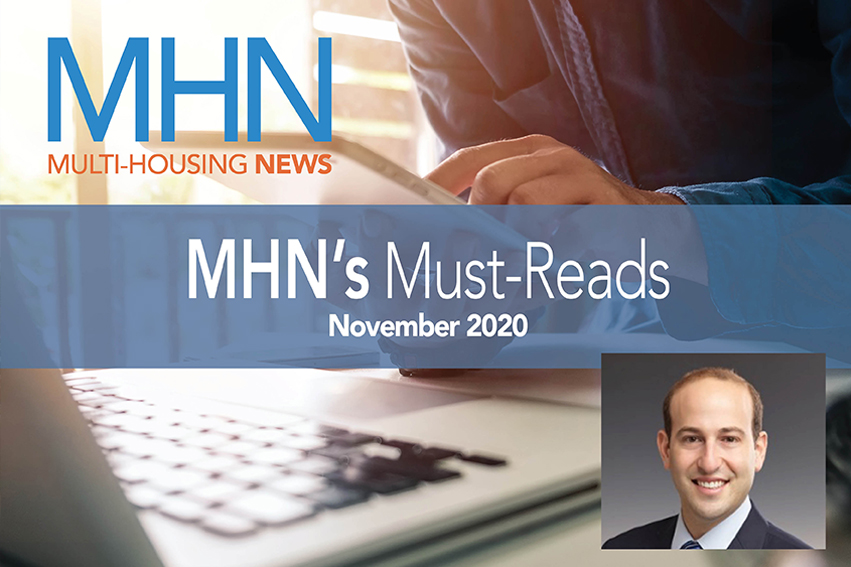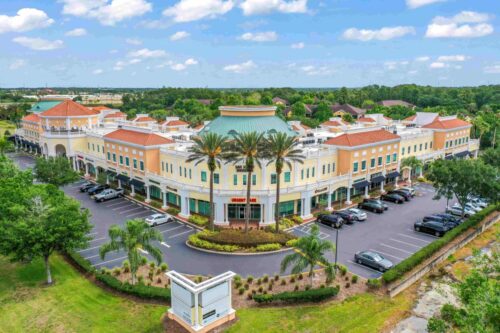December 4, 2020
Multi-Housing News Magazine Q&A with Ari Abramson

Multi-Housing News Magazine Ari Abramson Interview Questions
November 30, 2020
1. How has the pandemic impacted the multifamily market in the Mid-Atlantic region?
Like much of the nation, the Mid-Atlantic region locked down at the onset of the COVID-19 pandemic. With limited visibility to determine valuations, multifamily owners exercised investment restraint and focused their energies on current operations. Transactions also slowed because the bid-ask spread between potential buyers and sellers remained wide. Volume in several submarkets was further slowed by general uncertainty about the pandemic’s impact on renters’ employment status and the potential for continued government stimulus and rent regulation.
Overall, the region’s monthly collections exceeded expectations while remaining relatively steady compared to the same period last year. As operators began assisting residents with payment plan options, investors closely monitored collections and occupancy as key indicators of resilience in the multifamily asset class. The Mid-Atlantic’s durable and risk-averse employment bases, anchored by the life sciences, medical, education and technology sectors in and around the Baltimore/Washington corridor, provided the necessary support to the regional economy. Moreover, government employment bolstered the region’s overall stability.
2. Which metros in the region are best equipped to overcome the pandemic-induced economic hardships?
The effects of the COVID-19 pandemic have accelerated the market trends that Continental Realty has been tracking for some time, including migration to the suburbs and the appeal of larger unit sizes. Residents have utilized these larger units, with renters transitioning portions of their space into offices, gyms, and classrooms since mid-March.
Suburban submarkets surrounding our region’s major metros that offer urban living features such as walkability to outdoor recreation or a town center which are expected to recover faster than traditional dense, urban submarkets. We are focused on the surrounding metros of Washington, DC including Tysons, Arlington, and Reston along with Southern Maryland submarkets including Bethesda and Silver Spring. In Baltimore, suburban submarkets include Towson, Columbia, Owings Mills, and Annapolis.
3. Continental Realty Corporation’s headquarters is based in Baltimore. What can you tell us about the metro’s multifamily market, how has it dealt with the economic fallout so far?
Since April, our occupancy has either remained steady or surpassed benchmark averages as we experienced higher than historical resident retention at lease expiration. Retention of residents has been a primary operational focus during the COVID-19 pandemic. Despite lower in-person traffic counts than our norms, leasing volumes has exceeded historical levels, in part due to the success of our on-line leasing platform and our strategic online marketing efforts.
4. How does the Baltimore multifamily investment environment compare to other markets in the Mid-Atlantic region?
Despite a spike in unemployment across the metro, Baltimore multifamily has performed in-line with comparable metros in the Mid-Atlantic with flat to moderate rent growth. -Rents may stagnate or struggle as the development activity in Downtown Baltimore, Owings Mills and Towson has picked up and new supply may surpass demand in the short-term. Additionally, the metro has seen an increase in home ownership which has pulled residents who are typically renters by choice out of the Class A+ product. We have seen the Class A+ segment lower rental rates to maintain occupancy or to complete a slow lease-up. This creates a trickle-down effect that applies downward pressure on the Class B segment to adjust rents accordingly. This may also allow the Class B segment to capture residents trading down during uncertain times from Class A to an affordable option within the same submarket offering the same public-school zoning. Overall, the Class A- and B+ segments continue to be most resilient in the current marketplace due to price point and steadier performance in the early stage of recovery.
5. What effects has the coronavirus outbreak had on your operations and portfolio in the region?
CRC’s operations and investment strategy recalibrated from the roadmap of the past several years. Our company was founded in 1960, and over the past 60 years, leadership has successfully navigated eight recessionary periods and multiple economic shocks. We have thoughtfully assessed our resources, carefully reviewed our objectives, and lined up the physical, financial, and human assets needed to successfully weather the pandemic and the associated economic crisis. Our company has historically done well by buying during the most turbulent cycles. We know how to purchase debt directly from lenders and have a proven track record of working with banks to purchase their REO or to purchase distressed value-add properties from capital-constrained sellers. We understand the importance of relationships and have continued to source potential opportunities on an off-market basis.
As a health precaution, our team shifted to virtual as we closed our corporate office and leasing offices in early March ahead of the public mandates. Our on-site teams proactively established rental payments plans for those residents adversely effected from the pandemic. Starting in the summer, we slowly re-opened many of our outdoor and low contact amenity areas as well as our leasing offices with strict safety restrictions.
6. How do you underwrite in this period of flux and disruption? How do you evaluate risk?
Our Acquisitions team closely monitors multifamily fundamentals with a focus on properties’ rent collections and economic occupancy. Underwriting during a disruption requires a robust financial model with scenario analyses to stress test potential recovery trajectories and assess downside risk. The greatest unknown risk factor is the timing of COVID-19 vaccine for the public. Depending on how this goes, that can either elevate recovery or exacerbate hardships.
While we have underwritten assuming a U-shaped or Swoosh-shaped economic recovery, we often underwrite a V-shaped recovery which forecasts a recovery with modest rental rate growth to resume along with a start of interior unit upgrade program in late 2021 or early 2022. As such, we underwrite with a strategy centered around consistently growing cash yield from operations and long-term value creation. Our team aims to deliver these outcomes with an unwavering focus on downside protection.
7. What are your predictions for the region’s multifamily market in 2021?
In 2021, investor demand for multifamily will continue to be strong and valuations will hold in part due to low interest rates and ample agency financing. However, the COVID-19 pandemic disrupted cash flows, changed consumer habits, and delayed asset-level strategies. This may provide investors with opportunities to acquire properties that can later be repositioned. Our strategy will be to target opportunities with a blueprint for value enhancements and increased economic occupancy.
Also Covered By




